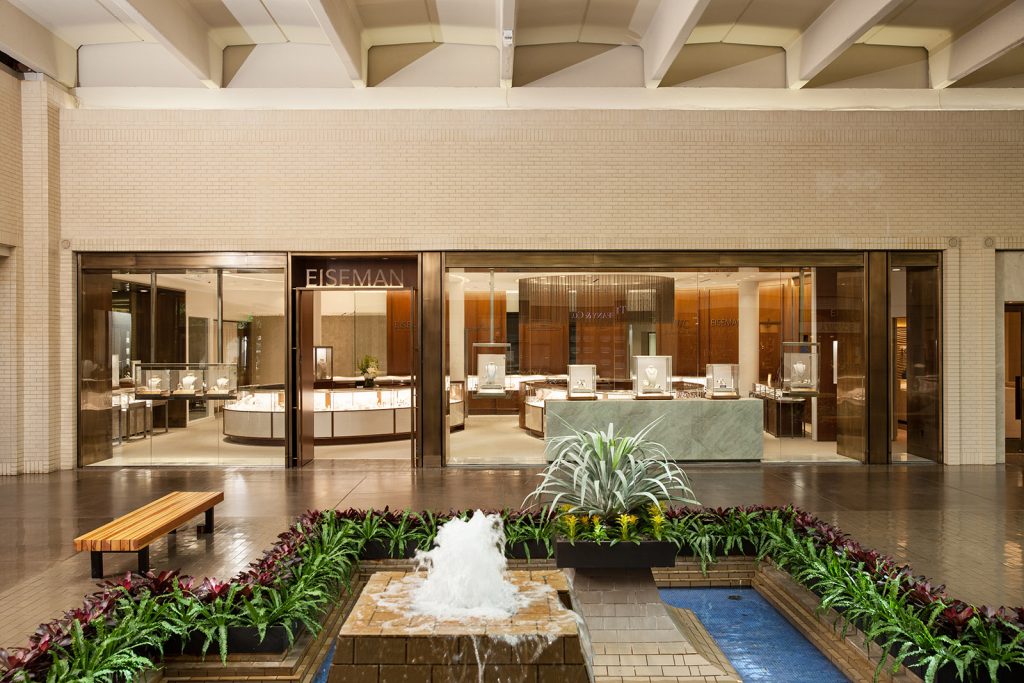RICHARD EISEMAN JR., President & CEO, Eiseman Jewels, Dallas, USA, speaks about the changes one can expect in America’s jewellery retail scenario post the pandemic.
Jeweller Richard Eiseman Jr. appears on my FaceTime Screen promptly at 9.30am Dallas time, wearing an old-school suit, and displaying the friendly and knowledgeable attitude that has contributed to the success of this business for close to 60 years.
The only family-run business in the city’s NorthPark super luxury centre, which was designed by Renzo Piano, Eiseman Jewels is celebrating its 57th year. It was voted the number one independent jewellery store in the US by National Jeweler magazine in 2010. It has big local competition. Its neighbours include major jewellery players like Tiffany & Co.
A trained gemmologist, Eiseman Jr. took over the company after the founder, his father, Richard D Eiseman Sr., passed away in 1996. Many family businesses fail when going onto the next generation. But with his 91-year-old mother as his top advisor, Eiseman Jr. continues to grow the company. Eiseman Jr. manages a full-time staff of 22, as well as relationships with top designers they stock, including Roberto Coin and Messika. They also run a Rolex franchise next door to the boutique.
Helping his career, Eiseman Jr. was educated as a gemmologist and has travelled the world learning from some of the finest gem people in the business. He began stacking boxes for his father and believes in family service.
Eiseman is, “no ordinary company,” he says. “What defines us is integrity, service, value, philanthropy and being relationship driven. We are an unusual combination of luxury jewellery and family service that you cannot get at a chain store.”
A pair of flawless blue diamond earnings selling for $3.7 million is the highest-valued piece of jewellery in the current inventory, but the majority of sales are between $5,000 and $25,000, he says. The price starting point is $1000. “There is a lot of wealth in the US from discretionary sources,” he reveals.
However, Dallas is not the oil town people think it is, notes Eiseman, pointing to a diversity of businesses. “We do have million-dollar transactions but they are special occasions,” he states.
Like most businesses, he’s noticed and made changes in the wake of the pandemic.
Surprisingly, “We had our best holiday season on record,” he remarks. “We were closed for seven weeks in April and May, and are lucky that Dallas is pro-business so we have stayed open since then. Things returned to normal in November. There is less foot traffic still, but we have found ways to adapt by taking jewellery to people’s homes, using Zoom and the phone,” he says. “From May through November, when it was quiet, we chose to bring down our inventory.”
Another change that he reports is designers selling more directly on their websites, and therefore going head-to-head with the retailers that represent them.
“Online is having a dramatic impact on retail,” he says. “I have noticed a lot of jewellery designers now going direct to the consumer. Many think it builds brand awareness. It means that, as retailers, we have new competition. It is not good for retail. Ultimately, each jeweller will have to find his or her own approach in the omni-channel universe. Retailers might adjust by finding other designers that are less competitive to them or by not selling by the branded names and promoting their own jewellery.”
Eiseman Jewels works with several US-based Indian designers. “Manufactured diamond jewellery that’s design-intensive we do not sell,” he says. “But we work with several Indian families that use luxury gemstones.”
He adds: “We use Indian suppliers for gems. A lot of those dealers were not in their offices in New York for a significant amount of time. Supply and demand was less.”
In general, he notes that the American jewellery business remains strong. “Those companies will get stronger who survived through this pandemic. Those in both the watch and jewellery business are more robust than just [those selling] jewellery. But price pressure has been felt by the growth of Internet sales,” he points out.
In terms of who is buying jewellery these days not much has changed: “In the 1980s, marketing came out with the woman self-purchaser. But it doesn’t look to me like it’s changed much. People who want nice things buy our jewellery. They want pieces that can become generational. I think the younger generation will bounce back from this and the older generation will think about investing in more family time and family pieces.”
How competitive is the US market for jewellery? “It’s extremely competitive on the diamond side because of online,” he notes. “The Internet has created an omni-channel approach to acquisitions. It’s not hard to put a website together.”
As for the future of the business, he says: “The million dollar question is will people come back from the Internet. Will old buying habits resume?” It’s anyone’s guess!




